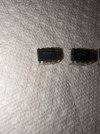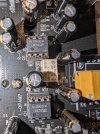That is how my current system is set up. I have a Benchmark DAC2 with XLR out to a Buckeye Hypex 252 amp and then onto the mains. The RCA out goes to a 12" sub with the cross over set at 65Hz. This works really well and sounds great, however, the mains are playing at full range, as is the Buckeye amp driving them.Sure. Though couldn’t one use a DAC with variable line out ?
With a cross over imbedded in the DAC, or the sub out in the amp, you can alleviate the stress the lower frequencies place on both the amp and the main speakers. If you have a powerful amp and tower speakers it not so important, however, for a 2.1 system incorporating bookshelf mains and a sub it is extremely useful, especially if your measuring with REW software.


